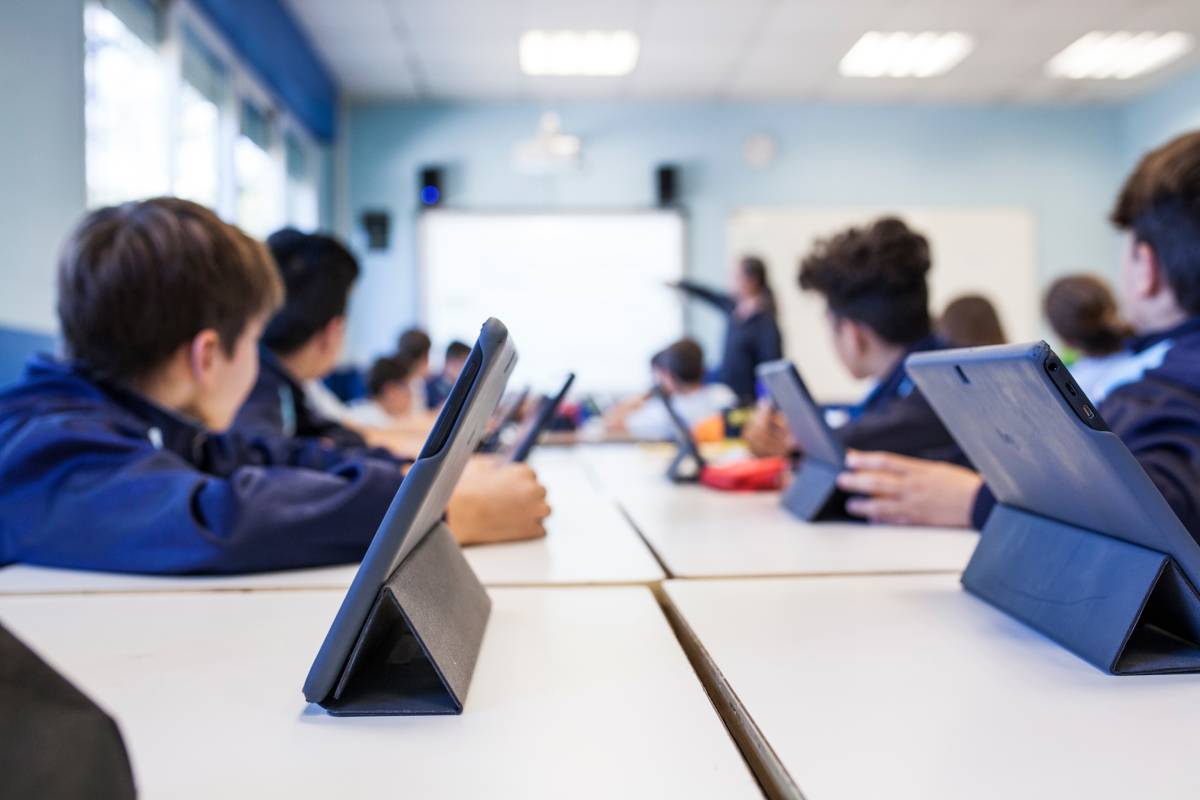Find the Best Primary Science Tuition Singapore for Enhanced Learning
Find the Best Primary Science Tuition Singapore for Enhanced Learning
Blog Article
A Comprehensive Overview to the Numerous Knowing Methods in Key Science Guideline
The exploration of diverse discovering methods in key scientific research guideline presents a chance for instructors to boost student involvement and understanding significantly. By analyzing hands-on understanding methods, inquiry-based techniques, and joint approaches, we can recognize reliable practices that cater to numerous finding out designs. Furthermore, the integration of technology and differentiated guideline plays a critical role in cultivating an inclusive setting. The inquiry continues to be: how can these methods be efficiently carried out in the classroom to optimize their influence? The response hinges on a better assessment of each method and its ramifications for teaching scientific research.

Hands-On Learning Methods
Hands-on understanding strategies play a pivotal function in main science guideline, involving students in energetic exploration and experimentation. These approaches allow students to interact straight with materials and sensations, cultivating a deeper understanding of clinical concepts. By using manipulatives, models, and real-life experiments, teachers develop a setting where students can observe, assume, and check their ideas.
Such techniques not just enhance comprehension however additionally grow crucial reasoning and problem-solving abilities. When students get involved in activities like developing basic equipments, growing seeds, or carrying out chain reactions, they are urged to ask inquiries and seek responses via their own observations. This experiential strategy assists to debunk complicated scientific principles, making them a lot more relatable and available.
In addition, hands-on learning promotes partnership among peers, as pupils commonly function in teams to perform experiments or share findings. This team effort not only enhances their knowing experience but likewise develops crucial social abilities. Inevitably, integrating hands-on techniques in main science direction fosters a lifelong love of discovering and curiosity about the natural globe, laying a solid structure for future academic pursuits in science and beyond.
Inquiry-Based Learning
Inquiry-based understanding is a training approach that motivates students to ask questions, check out sensations, and construct their very own understanding of clinical principles. This technique shifts the focus from typical teacher-led guideline to an extra student-centered experience, where learners take the effort in their educational journey. By cultivating curiosity, inquiry-based discovering advertises deeper interaction with the material, permitting pupils to explore topics in a purposeful context.
In technique, this strategy commonly includes hands-on experiments, observations, and critical thinking tasks that line up carefully with the clinical technique. Students are motivated to create theories, style investigations, and analyze data, which grows necessary skills such as logical and analytic thinking. The function of the instructor in this structure is to facilitate expedition, guiding pupils with the inquiry process while urging independent idea and collaboration.
In addition, inquiry-based knowing nurtures a sense of ownership over the learning process, encouraging students to pursue understanding actively. This approach not just enhances understanding of scientific concepts however additionally fosters a lifelong love for discovering, equipping trainees with the abilities needed to navigate a progressively complex world.
Collaborative Knowing Approaches
Collective learning approaches empower trainees to engage in meaningful interactions with peers, fostering a shared obligation for their educational results. In main science guideline, these approaches urge learners to work with each other to check out scientific ideas, fix problems, and perform experiments (primary science tuition Singapore). By getting involved in team activities, trainees can take advantage of diverse perspectives, enabling richer understanding and retention of clinical expertise
One key aspect of collaborative knowing is the emphasis on communication skills. Students have to verbalize their thoughts, listen proactively to others, and bargain concepts, all of which are important competencies in both real-world and academic contexts. This social interaction not just enhances their understanding of scientific concepts however also promotes team effort and conflict resolution abilities.
Additionally, collective discovering often causes raised inspiration and involvement. They are a lot blog here more likely to take possession of their understanding journey when trainees see the worth of their contributions you can try these out within a team. Educators can facilitate this procedure by developing structured team tasks that line up with educational program goals while providing advice on reliable collaboration methods. Generally, incorporating collaborative learning techniques in main science instruction grows a dynamic knowing setting that prepares students for future scholastic and social challenges.
Technology Combination in Science
The assimilation of innovation in key scientific research instruction enhances finding out experiences by providing innovative devices and resources that support various mentor techniques, consisting of joint knowing - primary science tuition Singapore. Making use of electronic platforms, simulations, and interactive applications allows students to engage deeply with scientific concepts, helping with an extra hands-on strategy to discovering
Digital laboratories, as an example, enable learners to conduct experiments safely and successfully, advertising inquiry-based learning. These devices can mimic real-world clinical scenarios, permitting trainees to picture intricate processes that would be challenging to reproduce in a typical class setup. In addition, technology fosters interaction and partnership amongst students, as they can share findings and collaborate on projects through on-line systems.
In addition, multimedia presentations and instructional videos can enrich lessons by dealing with diverse understanding styles, making abstract concepts much more obtainable. Information evaluation tools also empower students to collect and analyze scientific information, strengthening crucial believing abilities. Generally, the tactical unification of innovation in main science instruction not only enhances involvement however additionally prepares trainees for a highly innovative society, equipping them with vital abilities for future scientific ventures.
Distinguished Instruction Approaches
Differentiated direction strategies are vital for addressing the diverse demands of learners in key scientific research education and learning. These techniques allow educators to tailor their teaching techniques to accommodate differing abilities, passions, and discovering designs within the classroom. By using separated instruction, instructors can develop an inclusive atmosphere that promotes engagement and enhances understanding of scientific principles.
One effective approach is to make use of flexible organizing, which allows students to team up with peers at similar ability levels or with differing viewpoints. This technique urges peer understanding and advertises crucial thinking. Additionally, offering selections in projects can encourage trainees, allowing them to pick jobs that resonate with their interests while still fulfilling curricular goals.
Furthermore, incorporating tiered assignments is an additional useful technique. By making jobs with important link differing degrees of intricacy, teachers can guarantee that all pupils are appropriately challenged, despite their efficiency. Using developmental evaluations to gauge understanding more makes it possible for teachers to adjust their instructional methods dynamically, making certain that each learner gets the support they require.
Eventually, implementing distinguished direction approaches in main scientific research education and learning not only improves trainee knowing outcomes but additionally cultivates an interest for scientific research, preparing students for future scholastic searches.

Final Thought
In recap, effective primary scientific research instruction requires a multifaceted approach that encompasses hands-on understanding, inquiry-based methods, and collective methods. The assimilation of innovation and differentiated instruction even more caters to diverse knowing designs, cultivating an atmosphere conducive to expedition and essential thinking.
The exploration of diverse learning methods in key science instruction provides an opportunity for educators to improve pupil interaction and comprehension dramatically.Hands-on knowing techniques play a crucial role in primary science direction, engaging trainees in active exploration and experimentation.Inquiry-based understanding is an educational approach that motivates students to ask concerns, check out sensations, and create their very own understanding of scientific principles.Collective learning techniques empower trainees to engage in purposeful communications with peers, fostering a shared duty for their educational outcomes. Overall, including collaborative knowing approaches in key scientific research instruction grows a vibrant knowing environment that prepares trainees for future scholastic and social difficulties.
Report this page